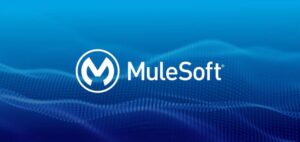What is Mule ESB?
Mule is a lightweight Enterprise Service Bus (ESB), which is the runtime engine of Anypoint Platform. It is developed by MuleSoft and is a Java-Based platform but can broker interactions from other platforms as well using sockets and web services. This integration framework allows developers to connect applications with great ease, by enabling them to exchange data. The ESB i.e. Enterprise Service Bus can be developed easily and can integrate and orchestrate events in real-time. Apart from all this, there are several MuleSoft Training and Certification courses, which makes it even easier to get MuleSoft training.
There are various firms offering MuleSoft training courses online. The average salary of a Mulesoft Developer is close to 926,956 INR per annum which is higher than what an average software developer receives.
There are boundless advantages of Mule ESB, some of which are briefed below:
- Easily Integrable: Mule components are available in whichever type you want, and hence, are easily integrable. Even POJO i.e. Plain Old Java Point or a component from another framework can be integrated.
- Services: Service creation and hosting are the most powerful capabilities of Mule ESB, which exposes and hosts reusable services. ESB acts as a lightweight service container. It also shields services from message protocols and formats. It not only enables location-independent service calls but also has separate business logic from messaging.
- Component Reuse: Both Mule and the ESB model enable reusing of components very significantly. Contrary to other frameworks, Mule allows you to reuse your existing components without any alterations. No programmatic API is required and neither do components require Mule specific code to run in Mule. Messaging logic and business logic is kept completely separate.
- Data Exchange: It is one of the most prominent advantages of Mule ESB. Data exchange across different transport protocols and formats is possible. You can learn more about this while taking the MuleSoft training course.
- Time to Market: Due lightweight and embeddable features, Mule can decrease the TTM i.e. Time To Market very significantly. It increases productivity for projects to provide scalable and secure applications. These are adaptive to changes and can be scaled up or down as per the requirement.
- Scalability: Mule has SEDA i.e. Stage Event-Driven Architecture which makes it highly scalable. Billions of transactions per day are possible with Mule across several Mule servers in a highly distributed environment.
- Lightweight: The most prominent feature of the Mule ESB is that it is the most ‘lightweight integration platform’. The footprint can be reduced by eliminating modules that are not needed. Lightweight Mule ESB is not termed so just because of its compact size, but also because it takes less time, cost and efforts to make changes to the existing integration. Fast deployment, configurable model and modularization make Mule ESB re-order, add, or change its functionality very easily. You can learn more about this in the MuleSoft training program.
Other wide-scale advantages of Mule ESB:
- Mule ESB flows can easily be created, edited and tested without having vast knowledge about Mule configuration.
- You can also build Mule ESB flows in graphical formats for visual representation.
- Mule ESB supports two-way editing and UI editor and is based on drag and drop element features.
- Mule ESB enables integrating with other systems more robustly.
- Mule ESB has a wide range of components to fulfil the need of every integration.
Some of the key features of Mule ESB which make them dominant over their competitors:
- Internal Self-Service
- Service Hosting
- Discoverable Templates
- Collaboration
- Reusable IT assets
- Tokenization
- Web Services
- Comprehensive Reports
Along with this, it also offers universal connectivity. The architecture is scalable and interactions across legacy systems can be handled by distributable object brokers. Other in-house applications and almost all modern transport protocols can be managed by the object broker.
Summing it all up, Mule ESB is a reliable open-source framework, which offers the best integration. It gives full control and ultimate visibility. Services and Applications are handled using different messaging technologies and transport protocols. Moreover, it is the most popular framework these days because of its advantages over other frameworks.
Hence, with all these advantages and with MuleSoft training cost so affordable, Mule ESB is the most optimistic and beneficial choice.
Additional Read: Top 10 Google Digital Marketing Courses that Allow for Certifications

